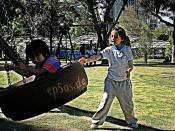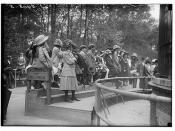Childhood: An Early Modern View
Question:
Analyze continuities and changes in methods of child-rearing among the English upper classes from the sixteenth through the eighteenth centuries. How did adult views of children shape adult practices toward their children?
Throughout the sixteenth, seventeenth, and eighteenth century, methods for childrearing were based on the adult perceptions of children. While some methods remained, others were being removed. These methods of childrearing fluctuated with the centuries, with adult views, and in accordance to previously set standards.
The sixteenth century's perception of a child was that of a harsh origin. According to the Calvinist minister, Rober Cleaver, babies were born with an evil, wrong-doing heart, and they laid in a cradle in both a rebellious and hasty manner. Left-handed children were also badly thought of. According to Cleaver, children born this way were to be scolded and their left hand was to be bound up and the use of it put to restriction.
This suggests that, even before they knew what the child was like, a left-handed child was bad. Based on Bartholemew Batty's account, children were beaten like they were not humans, but rather animals. They were clouted and buffeted about the face and head by their parents.
The seventeenth century saw children as innocent beings. According to the Anglican minister John Earl, children had a blank soul, not yet written on with observations of the world. No teacher had ever "drawn" on them; they were not, in a sense, contaminated by the world's evilness. The child is happy because they know no evil. When it came to breastfeeding, they no longer felt that a wet nurse was right to have. According to Elizabeth Clinton, nursing is the sole duty of the mother, no one else should be allowed to do so. Unlike the...



Child early hood
i find this very useful for my class in introductions to familys conflict
6 out of 6 people found this comment useful.